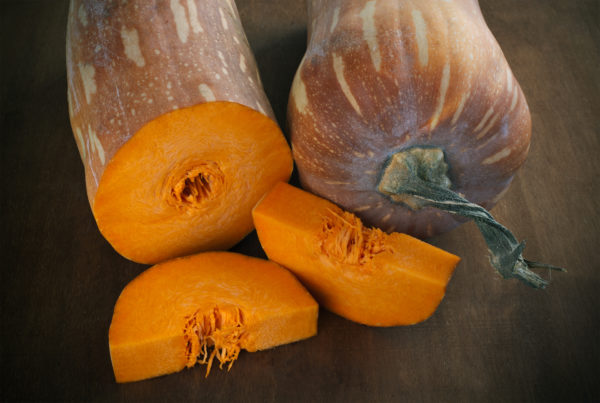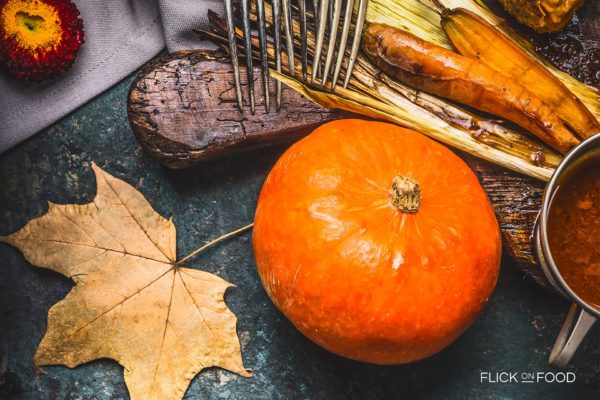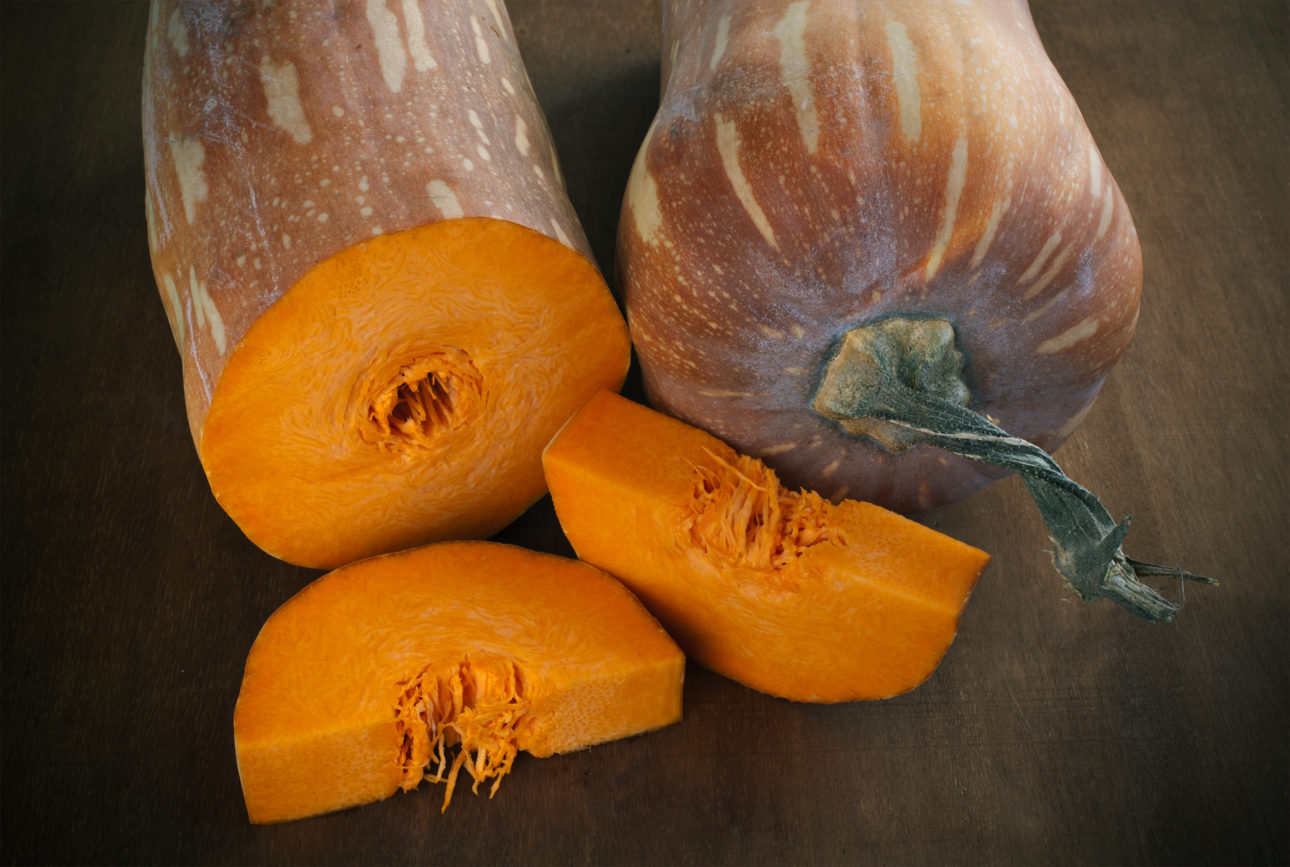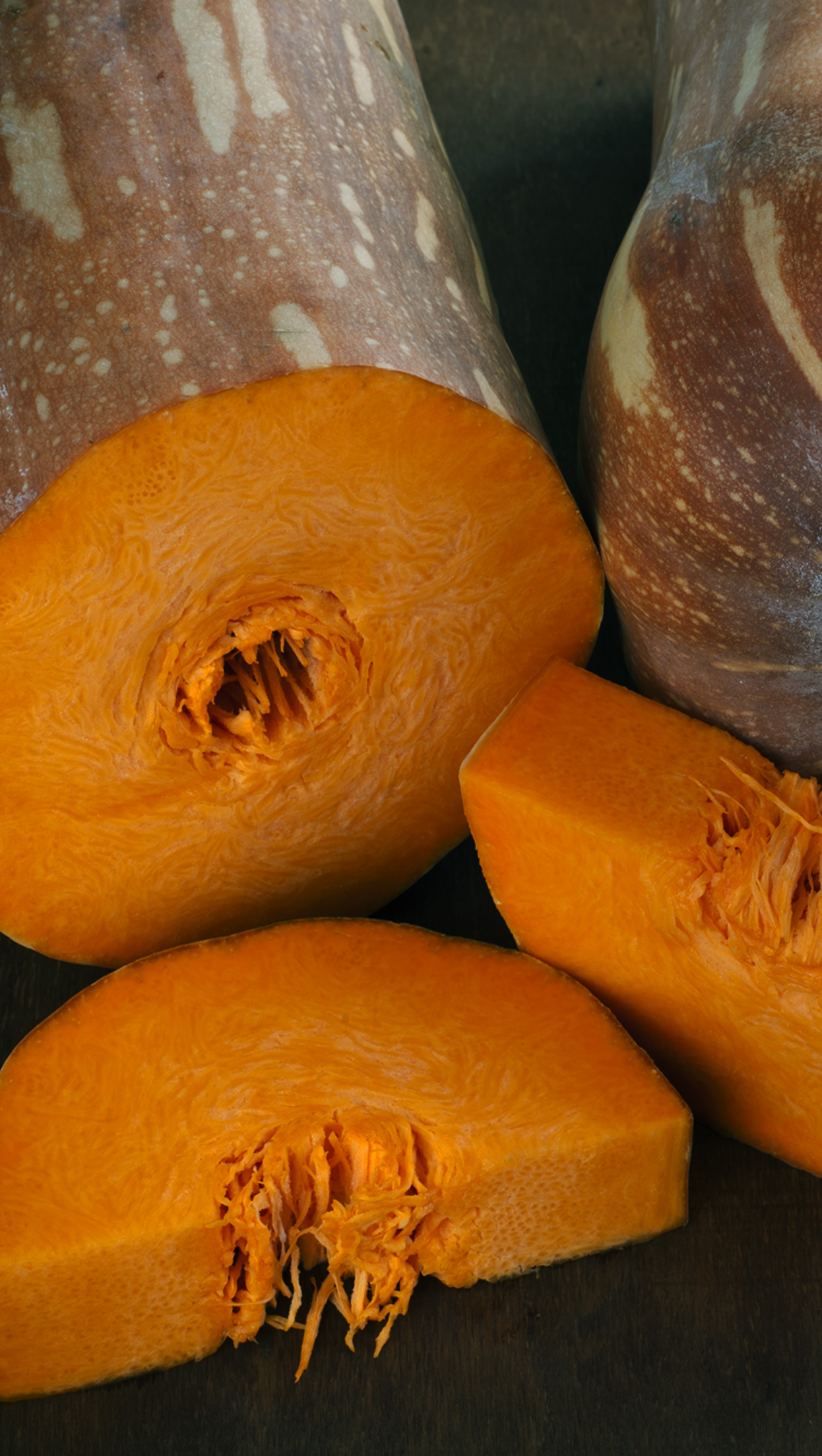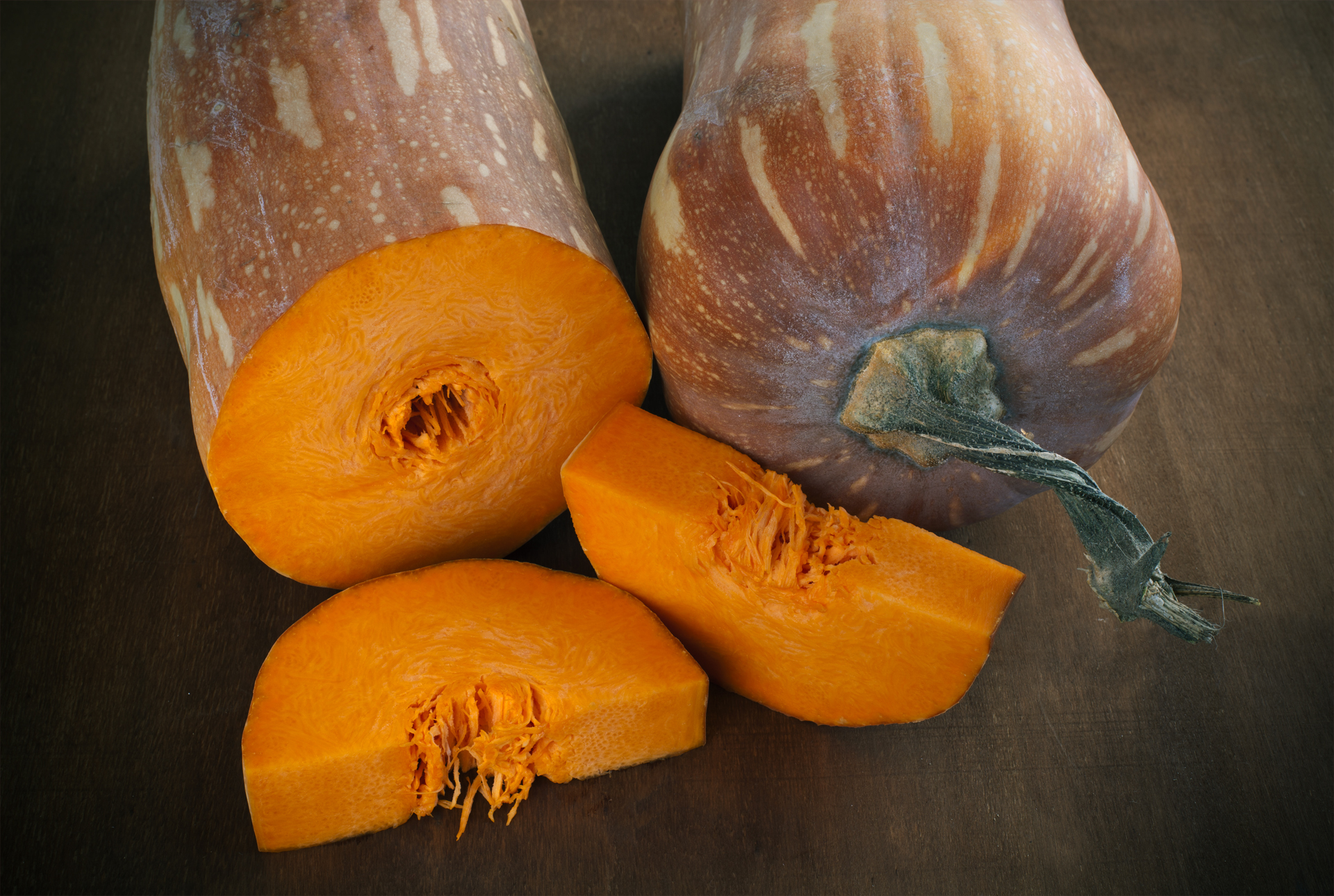
Long squash is perfect for making the traditional recipe pasta e zucca.
Origin
There are many varieties of squash, and Italy cultivates some of the most highly prized ones. In Campania, one traditional type is the ‘Neapolitan long squash’, also called ‘cucozza zuccarina’ (sweet squash) in the local dialect. Originally grown in the area of Agro Nocerino-Sarnese, today they’re a common sight in vegetable patches across the province of Naples. This long squash is also sometimes called the ‘full squash of Naples’ because it has relatively few seeds and a small inner cavity. It belongs to the Cucurbita moschata species, and can be identified by its elongated shape that’s wider at one end, and its smooth, thin skin. The outside can be lighter or darker green, while the inside is orange and sweet tasting. These squash are planted between April and May, and harvested between July and September. They can grow to over a meter in length and 20-25 centimeters in diameter, and can weigh up to 30-35 kilograms. It is one of the many agricultural products at risk of extinction.
Cook It
This ingredient is low in calories but high in vitamins and very digestible. Long considered a ‘poor’ ingredient, squash has now become a feature in many gourmet recipes. It is always well known in the traditional, easy-to-make recipe ‘pasta e zucca.’ It is excellent when prepared with extra virgin olive oil, chili pepper, parmesan and chopped parsley. Squash is also great when grilled, then sprinkled with salt, oregano and chili. It’s the perfect side dish with mozzarella and fresh cheeses.
Did You Know That?
Rich in flavor, this squash lends itself to tasty yet light dishes. Even its seeds can be eaten as a snack. They used to be extremely popular for people to snack on at all hours, so were called spassatiemo (time-passers) or just semmente (seeds), and were sold by street vendors in the classic cuoppetielli (paper cones). The squash was at risk of extinction but luckily a project “Gli orti di Napoli” (Gardens of Naples), an initiative by the Department of Agriculture, and production in the Campania region has brought historic products back on the market, so they’re becoming more common on market shelves.



